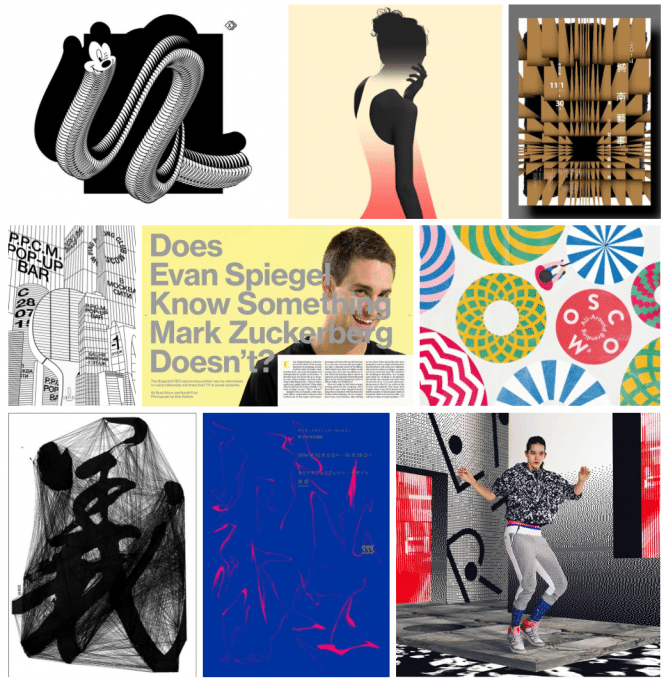Creative tone: 10 ways to work hard without losing creativity
Creative tone: 10 ways to work hard without losing creativity
The Theory and Practice portal translated the article “10 Creative Rituals You Should Steal”, in which the authors of the 99U website spoke with dozens of entrepreneurs, researchers and artists and found out what techniques allow them not to get bogged down in routine and keep their thinking outside the box.

1. Take a vacation every three months
“The most effective method is to carve out one week of rest,” says venture capitalist Brad Feld. “My wife Amy and I are going to the airport and flying somewhere farther. I leave the computer at home and give my smartphone to my wife. She returns it to me only at the end of the vacation, on the way home. We always go to a quiet, peaceful place, but at the same time we are traveling, and not just sitting at home for a week. When traveling, I can spend 100% of my time relaxing and chatting with my wife. I read books all day long, we talk, have fun and sleep until lunchtime. Coming back from such a vacation, I feel refreshed. “
2. After completing the project, do a retrospective
“The presidential campaign had really great team dynamics, which to some extent relied on retrospective meetings after the completion of a project. They let us stop and say to each other, “How did we do this? What did we do right? What was wrong? ” Harper Reid, former chief technology officer of President Obama’s campaign, recalls. – Since then, we have always practiced such a retrospective: so that you can immediately see what went wrong, who was right and who was wrong – and this has become an incredibly valuable practice. It is very important that everyone is aware of how things are going and that everyone shares their impressions as quickly as possible so as not to lose the relevance of the moment.
People sometimes forget that work can be painful too. We have feelings, and it’s important to express them in a timely manner. If you are in a room with your colleagues and tell them, “Okay, we start tomorrow. How do you feel, are you ready for this? “, They will be able to answer:” I would not like that “or” I am tired of our hard work and it was stressful for me, but I admire that we did it. ” We humans need a real human conversation about real feelings. “
3. Write every day
“I often advise people to write in order to know themselves, because it helped me so much,” says bestselling author Sherrill Straid. – I use writing for various purposes: I, of course, write as a writer of fiction, but I also write when I have to make a difficult decision or try to get started. And it seems to me that even if a person is not a writer, he will write during a crisis. For example, a person who abandoned the diary for a couple of years, after parting with a loved one, starts writing again. This is because the practice of writing can clearly show your thoughts. “
4. Build a base of interesting people
“The Fund for Interesting People is a pre-work strategy: spending time and money to communicate with interesting people will increase your chances of getting things done,” says writer and entrepreneur Ben Kasnocha. “After all, many people know that they need useful contacts, but as soon as the opportunity presents itself to treat someone to lunch, they are not ready.
From a long-term networking standpoint, if you haven’t found someone to serve you in the long run, you’re wasting your time. Relationships, whether romantic or professional, take time to develop. Lots of time! Too hasty development of relations for the sake of some one-time deal may jeopardize further potential for interaction. “
5. Keep ready-made projects handy
“In any project there comes a moment when you get stuck on something, and in such a situation it is best to move away from the computer, at least for 10 minutes,” recalls designer Sara Felske. – If you clear your mind, ideas will come sooner. Any exercise or meditation will help with this.
Plus, I always have a bunch of interesting things close at hand that I collect: magazine clippings, invitation cards that I liked, beautiful packaging – in general, anything that can inspire me. There are special books full of visual works that are not united by a common theme – you can flip through them when you need ideas.
6. Get enough sleep
“When it comes to sleep, I’m taking a very tough stance,” says journalist Pat Kierman. – You need to learn to say no. When you go to work in the morning, you need to be slept and healthy, so you should resist the temptation to attend all the parties to which you are invited. “
7. Imagine what should happen in the future
“I once helped myself like this: I wrote an article for the Financial Times or the Wall Street Journal about my company in the future,” says Rapha founder Simon Mottram. – Usually they write: “I will try to achieve.” And I wrote in 2005 that Rapha had already achieved great success in 2010. We revolutionized the bicycle market, led the market, with 25,000 customers meeting at our bike cafes, going there to go somewhere together. I did not write that maybe we will achieve this – I described it as if it had already happened. And five years later it turned out exactly as I predicted. “
8. Brainstorming at a bar
“I don’t do all the sketches in the studio, but I go to a bar, restaurant, park and sit there for an hour and a half,” says designer James Victor. – It’s already become a habit to leave the studio at 4 or 5 pm and sit in a bar with a beer, mentally working on a new idea. This is a really good habit. I can’t do analytical work in the studio – there is too much going on in one place. How many great architectural masterpieces have been designed on napkins? This happened because people were free in their thoughts, free from routine work. “
9. Get out of your usual place
“I don’t think you have to sit in the office and stare at a blank page,” said radio host Garrison Keillor. – Better walk around the room, get out of it and take notes of what you can observe around. You will start matching the things you see with the things you think about – and that will be the beginning of a new article.
I think it all starts in the end in the realm of the visible world: with conversations heard, with a glimpse of events. There is a great chance that after overhearing a snippet of someone’s conversation, you will come to an interesting thought. “
10. Use morphological synthesis
“Morphological synthesis is a way to break your thought process into segments. You need to take 4-5 adjectives, and then start brainstorming in their direction, – shares the secret of productive work, actor and director Ze Frank. – Usually, when I have an idea, I deliberately give up the sense of proportion. Let’s say Procter & Gamble has a new toilet paper. I am trying to come up with a concept, regardless of its scale and realism. What happens if there is no paper at all? What happens if there is too much paper? What paper have I never used? How incredible does a huge roll of toilet paper look like? Is there someone who never uses it? Or maybe he always uses it? What can be made from 10,000 rolls? What would the world look like without toilet paper?
And then I maneuver between the extremes until something interesting pops up in my head. And then you can already concentrate on this idea. The exercise is useful in that it forces you to explore the boundaries of a probable idea. “
Source: T&P
…


